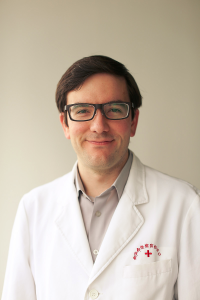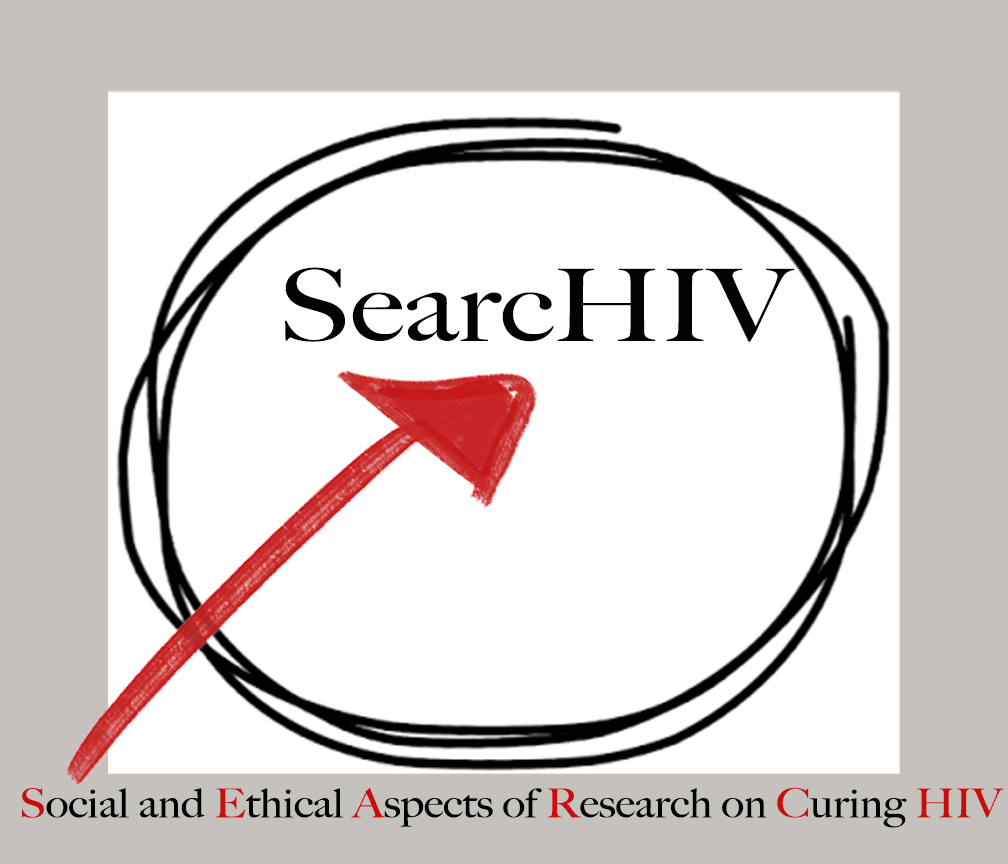In our new series, we will be interviewing members of the searcHIV team and others involved in HIV cure research.
We launch the series with an interview with Joe Tucker, a clinician and social scientist who is one of the Principal Investigators on the NIH grant funding the searcHIV project. In this interview, Joe Tucker tells us about how his background led to his current work, discusses the role China will play in HIV cure research, and shares what excites him about the searcHIV project.

searcHIV: Could you describe your background and what drew you to studying the social and ethical implications of HIV cure research?
Joe Tucker: Sixteen years ago, I went to Dr. Mike Cohen at UNC and told him that I wanted to do HIV research in China. I was still an undergraduate at the time, and Mike described frankly that I lacked the medical, public health, and Chinese studies training to make a contribution to this field of research. With Mike as my main mentor, I embarked on a pathway of more formal training in medicine, public health, and Chinese studies. Anthropological methods are particularly useful in the context of China where local social and cultural factors powerfully shape health and well-being. After a year of mentored research in Nanjing at the National Centers for STD Control and Prevention as a medical student, I was settled on a career related to HIV social science in China. Then fast forward to 2012, I was chatting with Dr. David Margolis at UNC Chapel Hill about his ongoing HIV cure research. The field of HIV cure research was still quite young at the time, but his stories of patients calling him from the around the world in order to enroll in his small Chapel Hill clinical studies spoke to the social forces at hand. I love collaborating with multi-disciplinary teams and so when Gail Henderson and Stuart Rennie were both excited about moving forward this line of research as part of an NIH R01 application, it sparked this larger research project.
searcHIV: What is current the state of the HIV epidemic in China?
Joe Tucker: Similar to the United States, China has a concentrated HIV epidemic that is mostly confined to key affected populations such as gay men, female sex workers, and people who inject drugs. HIV incidence in gay men in particular remains quite high. However, unlike the US, the typical gay man in China is married, has one child, and does not disclose his sexual orientation to anyone (including his doctor). This creates special problems for prevention, treatment, and developing new interventions.
searcHIV: What types of HIV cure related research are taking place in China?
Joe Tucker: Within Guangzhou, our searcHIV team is undertaking anthropological research led by our postdoctoral fellow, Dr. Qingyan Ma, our Doris Duke scholar Zack Rich, Director of the HIV Clinic Weiping Cai, and Vice-Director of the Laboratory, Fengyu Hu. This team has done a huge amount of empirical and theoretical research to better understand some of the fundamental issues at stake with curing HIV. In terms of clinical HIV cure research in China, I am aware of a few small human studies that are mostly being conducted in larger metropolitan areas, but these are still quite early stage trials.
searcHIV: What do you foresee as China’s contribution to global efforts toward finding a cure for HIV?
Joe Tucker: China is in a unique position to contribute to HIV cure research. Each year there are increases in research funding and new programs to retain the best and brightest junior researchers. While ten years ago the top Chinese graduate students would immigrate to the US and remain there after finishing their PhD program, those same students today are returning back to China. In Chinese, we call them sea turtles “Haigui” because they are swimming back to China. The other interesting twist in China is traditional Chinese medicine. Several traditional Chinese medicines may be useful as components of strategies towards an HIV cure, and tapping into this wisdom could prove useful.
searcHIV: What searcHIV projects to date have had you the most excited?
Joe Tucker: It is a wonderful question and I will preface this with saying that I don’t do research that is not exciting at some level. Life is too short and I strongly support the great work that all our searcHIV team is doing at each of the three sites. With that caveat in mind, I would have to say that empirical research talking to participants in ongoing HIV cure trials and with researchers supervising studies has been the most exciting part. As this research moves away from ongoing cure trials, it becomes more theoretical and future-oriented in a way that can become speculative. But as the research gets closer to HIV cure clinical research, it becomes more relevant in the short- to medium-term and more empirically grounded.
searcHIV: What have you been most surprised by since beginning this project?
Joe Tucker: The historical research looking at archival material on the development of syphilis cures has been absolutely fascinating. I had a chance to visit the St. Mary’s archive in London where many of Alexander Fleming’s original papers are kept. There have been many syphilis cures before penicillin that powerfully shaped the delivery of syphilis testing and treatment. Paul Ehrlich’s development of Salvarsan one hundred years ago directly led to an entire nationwide system of venereal disease clinics in the United Kingdom and marked the birth of a distinct subfield of venereology. But as penicillin became available later, this entire VD system and the practice of venereology withered away. The journal Sexually Transmitted Infections was so interested in this historical research that they commissioned a special themed issue on the topic.
searcHIV: How do you hope the findings from this project will be used?
Joe Tucker: Our goal is to generate findings that inform clinical HIV cure trials, engage stakeholders around HIV cure efforts, and pave the way for achieving a cure for HIV. Although we are not conducting clinical trials, the social and ethical perspectives that we are exploring are vitally important to the broader effort. Look at the VOICE trial that was just published in the New England Journal of Medicine. Many of the women who participated in the trial did not take the study drugs and hid their medications. Only through careful qualitative research did the study investigators come to realize the social context that prevented drug adherence. Strong social science and ethics research are an essential part of the HIV response.

